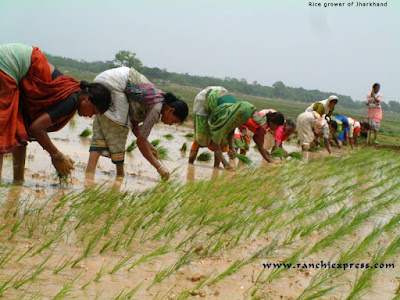Organic Farming
Agriculture has completed a cycle and is changing its phase. The green revolution was damaging in 5 decades. The indiscriminate use of pesticides and chemicals polluted the soil, water and the entire ecosystem. Late, our farmers are looking back. Now we find organic movement everywhere. But most farmers are confused about both systems. They wonder if the organic total is possible and feasible. This documentary will discuss the need, possibility and opportunity of organic agriculture in detail. Agriculture started together with human civilization. But it was totally dependent on nature. The use of chemical fertilizers began during 1850 in western countries. But in India, chemical agriculture became popular with the green revolution that started in 1965. High-yielding hybrids entered our farms. Chemical fertilizers became unavoidable to obtain a higher yield from these hybrids. This paved the way for the indiscriminate use of chemical fertilizers. The scientific community supported chemical agriculture by neglecting the possible long-term negative effects of chemicals. Government departments promoted this as a priority. It is true that this green revolution produced enough food for the nation. But in due course of time pests and diseases began to attack crops. Poisonous pesticides entered the scene for crop protection. The dangerous effects of these poisons were very evident very soon. The soft soil began to harden due to chemical residues. Groundwater was contaminated with nitrates, sulfides, and other chemical impurities. Nature's balance was lost and the pest attack got out of control. Cabbage and cauliflower need 8 to 10 sprays, cotton needs 13 to 15 sprays, and grapes consume 30 to 40 sprays in one season. Then imagine the effect of the chemicals. Consumers who use this product and the farmer who sprays these pesticides are affected with asthma, allergies, cancer, and many more health problems. We lost rich biodiversity and balanced nature before being alerted. The volume of chemicals used has grown many times from 1965 to 2010. But the increase in production is only 4 times. Even this increase is not only due to chemicals. The increase in cultivated area and irrigation contributed a lot. Of course, only the chemicals are not to blame. Over-tillage, hybrids targeted only at high-yield, genetically modified crops and varieties, over-watering, off-season crop cultivation, non-acclimatized crops and varieties, the tendency to produce easy crops, etc. They are also the reasons for today's pathetic situation. s agriculture. The green revolution has become the war against nature. But now we lost the war. The only option with us is to surrender to nature again. Let's study the harmful effects of chemicals now. The diversity of crops and varieties is lost due to the popularity of hybrids. Monoculture is common everywhere. Food quality has decreased despite higher production. The use of organic fertilizers decreased with the application of a large amount of chemical fertilizers. Therefore, the humus content of the soil has decreased. This affected the structure of the soil and, therefore, the aeration. It led to the decrease of useful aerobic microbes in the soil. Soil water holding capacity and rainwater filtration decreased. Runoff water eroded the fertile soil. Nutrient absorption was affected due to imbalance in soil pH. Soil microbial activity is quite essential for nutrients to be available to plants. The destruction of the soil microflora severely affected the absorption of nutrients by plants. In chemical agriculture, only 20-30% of the nutrients are absorbed. The remaining portion dissolves in the water quickly creating contamination of the groundwater. Chemical residues from fertilizers accumulated in the soil make it useless for crop production. Excessive irrigation created saline and swampy lands. Decreased organic matter and unbalanced chemical nutrition led to micronutrient deficiency. Due to the massive destruction of useful predators and decreased resistance to plant diseases, crops became easily susceptible to pests and diseases. This increased the application of chemical pesticides again. Even then, productivity is going down year after year. Chemical residues such as nitrates have accumulated


Post a Comment